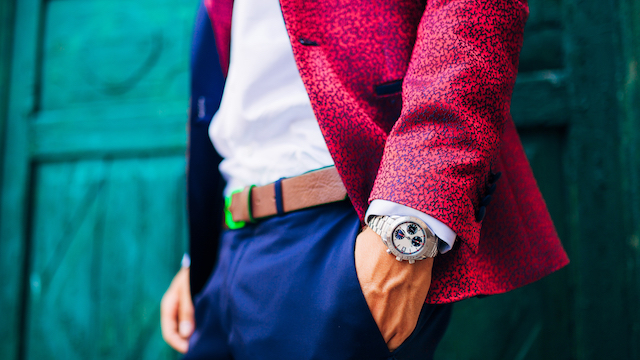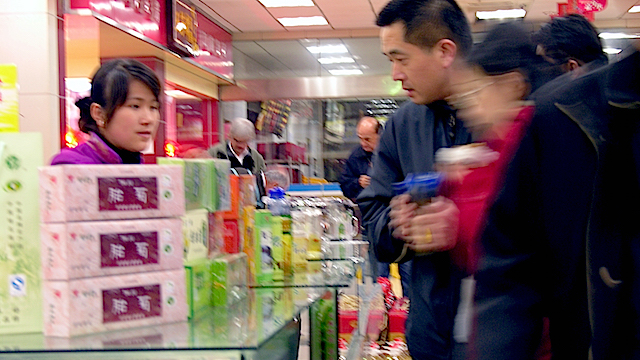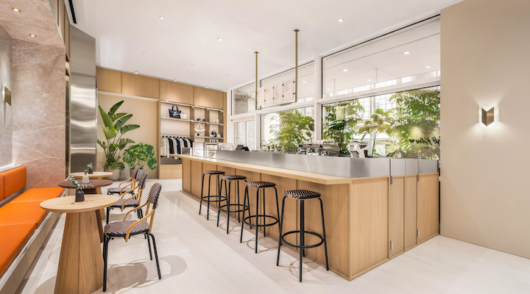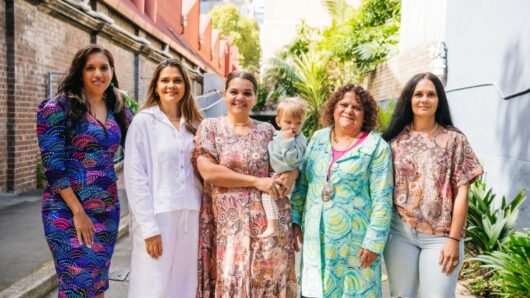
Online fashion recommerce is a relatively new business model in China. It began with integrated online platforms then moved into niches, such as pre-owned luxury fashion. As such, it has had a penetration rate of less than 5 per cent, compared to 10 to 15 per cent in the US – but it is steadily growing.
It is being driven by a huge pool of luxury items in China, combined with economic growth starting to stabilise. Also fuelling the growth is venture capital funding.
China’s recommerce market was estimated to be worth RMB400 billion (US$60 billion) last year, according to CBNData, almost three times greater than the country’s transport-sharing economy.
Transactions in used luxury fashion alone – online and offline – exceeded RMB8 billion, a year-over-year increase of 20 per cent. Put into context, the total value of luxury items owned in China (and available for used circulation) was RMB300 billion last year, according to the working committee of the Chinese Association for Secondhand Luxury. That shows just how underpenetrated the fashion recommerce market is there, and the scale of the growth opportunities on offer.
Multiple growth drivers
There are five key drivers of the growth wave – Chinese consumers are embracing digital: Online shopping has long been popular in China, involving 467 million people as of last year. Online sales made up 16.9 per cent of total Chinese consumption then, more than double the 8.1 per cent of the US.
More than 60 per cent of Chinese consumers research online before making a purchase.
E-commerce can compensate for a sparse store network in lower-tier cities: Online fashion recommerce platforms are well positioned to benefit from the growing number of high-income consumers and the burgeoning consumption in lower-tier cities where luxury brands are not so well represented. By 2030, lower-tier cities will have more “high-income” consumers than Beijing has now, according to the Economist Intelligence Unit. It is estimated that from the current 10 per cent, the proportion of upper-middle-class consumers will reach 35 per cent of the total population by the same year. Shanghai, Beijing, Shenzhen and Guangzhou will continue to dominate luxury spending, and smaller cities will transform into luxury epicentres.
Demand from young consumers: The growth of China’s fashion recommerce market has been driven primarily by demand from consumers born in the 1990s and 2000s, who are more receptive to wearing used clothes.
Recommerce unlocks value: The recommerce market can help unlock the value of pre-owned clothing by matching buyers and sellers. For buyers, fashion recommerce represents good value for the price paid; sellers can liquidate their discarded luxury items into cash. About 80 per cent of consumers buy used products because they offer good quality for price.
The decluttering movement has spurred a sharing economy: Decluttering, the process of organising one’s belongings and keeping only those things that “spark joy”, has been gaining traction around the world, particularly in large cities. China is no exception. Decluttering will be a long-term consumer trend, helping boost, by ripple effect, the sharing economy, which enables consumers to have access to what they need without acquiring the product permanently.
Integrated platforms dominate
The recommerce market is dominated by Alibaba and 58.com, which account for 90 per cent of transactions. But an increasing appetite for fashion recommerce has driven the proliferation of new platforms.
Here are the main players – Xianyu: Translated as “idle fish”, this is an integrated consumer-to-consumer (C2C) pre-owned goods marketplace run by Alibaba. It seeks to differentiate its positioning by introducing virtual communities within the app to increase user engagement.
Zhuan Zhuan: A C2C marketplace for the sale of pre-owned products that was launched in 2015 by 58.com, one of China’s leading online classifieds and listing platforms. The platform works similarly to Xianyu. The Zhuan Zhuan platform automatically connects with WeChat, which lets users import their contact lists so they can easily transact with friends.
91xinshang: An online luxury fashion recommerce platform launched in November 2015, it has a professional team of experts to provide authentication, and all transactions are insured.
Real: An online luxury recommerce app launched last October, it emphasises the authenticity of the items it sells. As well as brand authentication, it offers customisation, deluxe care and other value-added services.
Secoo: On this Chinese online pre-owned luxury platform, sellers can either complete the consignment process online, or visit Secoo’s flagship stores, Secoo Club, in Beijing, Shanghai, Chengdu, Hong Kong and Tokyo.
GoShare2: An online fashion recommerce app for women’s clothing, GoShare2 plays an active role in processing sellers’ items, ranging from cleaning the clothes, taking photographs and carrying out appraisals, to displaying the items online and handling customer inquiries.
Potential opportunities
Online fashion recommerce platforms are likely to outperform physical second-hand stores in China because of their wider reach. And there are other reasons…
Millennials prefer buying pre-owned items online: Because of the anonymity factor, millennials prefer to buy pre-owned goods online rather than at a physical store. Research shows that high-end consumers in China are 20 years younger than their counterparts in Japan and the US.
Low penetration rate: There is significant potential for luxury fashion recommerce in China given the low penetration rate. Luxury goods usually retain a higher value when circulated in the used market.
Chinese consumers are expected to make up a significant 44 per cent of the total global luxury market by 2025, expected to surpass $397 billion at that stage, according to McKinsey.
China’s online recommerce startups last year raised aggregate funds of RMB3.5 billion from venture-capital funds, compared to just RMB40 million in 2011. That resulted in a proliferation of online recommerce platforms, from 20 to 86 during that timeframe.
Tencent Research says more than 80 per cent of those platforms are product-specific. Vehicle recommerce accounts for the lion’s share at 27, followed by nine in apparel and eight for luxury items.
Apparel accounts for 20 per cent of the online used market in China. Pre-owned luxury goods grew 20 per cent year on year last year, the most popular brands including Chanel, Coach, Dior, Gucci, Louis Vuitton and Prada. The most popular categories are bags, watches, glasses, jewellery and scarves.
China versus the West
The value proposition and business model of successful fashion recommerce platforms in China differ from that of their overseas counterparts, not only because the Chinese market is immature, but because the business models are more diversified.
In the more mature US fashion recommerce industry, major players like Poshmark and ThredUp have consolidated their market positions.
For China, the business models are more diverse with most platforms using data technology to map consumer behaviour. There are also various consumer touchpoints:
- Communities are created on online recommerce platforms among users sharing similar interests, provide them with a venue for sharing news as well as transacting. Examples are 58 Zhuan Zhuan and Xianyu.
- Buyout is a C2B2C business model whereby pre-owned items are bought sellers and then sold.
- Consignment is a C2C business model through which recommerce platforms provide delivery, authentication and maintenance services for traders.
- Some recommerce platforms, such as Secoo, have physical pop-up stores where they display products.
Leading players in the US – like Poshmark, The RealReal, ThredUp, Tradesy and Vestiaire Collective – mostly work on the online consignment model. ThredUP estimates the US apparel resale market for online and offline combined will reach $33 billion in 2021.
Strategies to win hearts
Online recommerce retailers targeting Chinese consumers need to create a community for shoppers through social media and experiential stores. Retailers should also offer an end-to-end customer support system, including style advisory and maintenance.
To capitalise on the opportunity, the fashion recommerce market will need to change consumer perceptions about the authenticity and hygiene of pre-owned products.
More standardised processes for quality control, customer service and dispute resolution need to be in place for the market to develop systematically.
Several other strategies are likely to boost the growth and performance of China’s online recommerce players – Retail-tainment: Using social media and experiential stores to increase the attractiveness of products. Community is a key aspect of China’s recommerce market. Data suggests community users are more engaged, and the average transaction amount within a community strongly correlates with the level of interaction of its users. For example, retailers can create a social community among consumers based on common interests and location to build trust, foster interactions between celebrities and fans through live broadcasting, and open experience stores with a brand-authentication service and personalised style consulting.
Value-added services: To create value for pre-owned products, retailers should consider offering an end-to-end customer support system, quality inspections, brand authentication, maintenance, consignment sales, style advisory and other services.
Focus on young millennials: Target customers mostly live in lower-tier cities – 64 per cent of them in tier-one cities and 23 per cent a tier lower. This means fashion recommerce startups should focus on young millennials in cities.
Challenges still
Fashion recommerce has yet to be widely accepted in China, the key challenges being – Consumer perceptions: Concerns about the authenticity and hygiene of pre-owned fashion items may discourage potential buyers. Players need to educate their target consumers.
Authenticity: Authentication services often do not cover pre-owned merchandise, so consumers tend to be more cautious about used products than when shopping for brand new items. According to the China Secondhand Luxury Association, 60 per cent of luxury products bought through “daigou” (overseas agents buying merchandise on behalf of customers in China and carrying the goods across the border) are counterfeit.
Quality control: The difficulty in appraising pre-owned clothing as well as quality-control issues lead to many transactional conflicts. There is no standardisation.
Hygiene: Consumers perceive used fashion items as being less hygienic.
Lack of critical mass: The relatively small size of the market may lead to inefficiencies in order matching. Potential buyers may be presented with an incomplete product catalogue while sellers may have difficulty finding buyers quickly.
Customer service: Consumers of pre-owned luxury fashion tend to demand high-quality customer service, which the online platforms may not be equipped well enough to provide. International players offer seamless before- and after-sale services with stricter quality control. For example, ThredUp appraises and accepts only half of the items submitted to it, and offers a 14-day returns and exchange policy.
Lack of standardised procedures for dispute resolution: Most Chinese platforms have yet to agree on a set of standardised procedures in cases of dispute.
Opportunities, but…
Given its early growth phase, China’s fashion recommerce market offers significant opportunities for startups that are well-funded and have a unique positioning. China is the largest consumer of luxury products globally, which offers great potential.
But to capitalise on this opportunity, the market first needs to change consumer perceptions about used products. Well-funded recommerce platforms that provide such customer-service options as pricing, logistics and quality control will be the ones that will do best in China.
- Deborah Weinswig is MD of Fung Global Retail & Tech, a think tank funded by the Fung Group with offices in Hong Kong and New York. This is an edited summary of the report Deep Dive: China’s Online Fashion Recommerce Market – Part 1. The second part drills down further into the workings of the major recommerce sites and explores their differences. Both parts are available for reading online or downloading with further graphics at fungglobalretailtech.com









